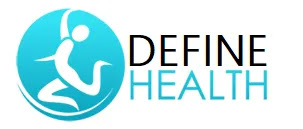Baby Feet and care
Baby Feet and care
How their feet develop
People
generally assume that a child’s feet are small in size than the elder ones
which actually doesn’t hold true. A baby’s feet is only made up of fewer
soft bones and its only after 18 years
of age that this soft cartilage gets
converted to fully hardened 26 bones. Another thing to be noticed is that a
child’s feet are more susceptible to damages than adults.
This
makes the careful care utter needful. “Ensuring the proper fit of children's shoes should be given the highest priority.”. Although damaged teeth get a
chance of reincarnation but damaged foot don’t”.
Foot care – the do’s and don’ts
DO:
- Tickling of toes, legs and feet is helpful in stimulating the muscles so provide your baby with a regular tickling massage.
- Wash your baby’s feet in soapy, warm water and dry them carefully.
- Let her have a walk barefoot sometimes.
- Keep their nails trimmed well.
- Inspect feet on regular basis to keep a check on signs of infection or damage.
DON’T:
- Use sleep suits, tights, socks, padders that restrict her movements.
- Avoid putting her into shoes on her first step only.
- Make your child wear synthetic socks or tights and make his foot breathing intricate.
Taking care of baby feet.
When to fit first shoes?
Babies start walking single handedly around the age of 10-11 months. This is the stage of learning, balancing and stretching toes on the ground. So don’t just hurry for shoes so soon.
Don’t just rush for shoes whenever you see your toddler walking barefoot give them time to become familiar with the floor. Get the move on the shoes in case you feel the need or say in case of rough and irregular environment.
On your first move for baby shoes, it’s essential to have proper idea of right size and fitting (for toddlers and babies it starts at 3) and with fitting widths for child’s feet. A wrong pair of shoes can totally alter your baby’s walk learning process. If still any problem you can see a trained fitter (shoe fitters) to find the right pair of shoes (with respect to proper width length and type.)
Treatment Options for Foot Pain
One can take various control measures to avoid the foot pain or to treat it if already arisen. A very common acronym RICE is implemented to relieve foot pain. RICE stands for: Rest, Ice, Compression, and Elevation. The foremost step includes visiting some foot specialist surgeon or a podiatrist the other treatments includes:
- Massaging the foot muscles.
- Switching to a different foot wear.
- Limiting foot activities.
- Medications.
- Surgery (being the last alternative left in case of severe cases.)
Prevention measures also exist for diagnosed foot problems like putting on shoe inserts. They have put forward shoes extending in ranges of color, sizes and thicknesses for people diagnosed as patients of foot problems. Depending upon root cause of pain treatment is applied. The relief or recovery time are interrelated with the reasons of pain. For example: a stress fracture causes pain for nearly six weeks and an infection pains till the time it is cured.
Given below are some commonly occurring foot problems especially in babies.
Congenital Curly Toes
Curly toe is referred to the condition when some toe is strangely rotated or twisted. The toe is bended at the end and may present problem with foot wares sometimes. Cutting the toe tendon that’s causing stress and ultimately rotation is the only treatment available for this deformity.
Overlapping
Toes
If the fifth toe is crossing over the fourth toe the condition is called as overlapping condition. It’s not so troublesome mostly but sometimes become problematic if goes to higher extent and necessitates of a surgical operation.
Choose the right shoes for baby feet care
Initially you can choose the laces for better foot shape of baby. When the kid dresses himself then the fastenings help them dress easy and better.
High and low
At very early age the low shoes are not recommended but in the later young age they reinforce the angle. If the shoes are high then baby feet and care is maintained with fix heel. If worn too early it can encourage lazy muscles. Baby can wear anything from 2-3 years.
You
can look for top and low leather lining shoes which are allergy free and
without risks. Soft top of the shoe that is very supple. An anti thick sole
that is very thick and tough but not very rigid and enables easy foot movement.



